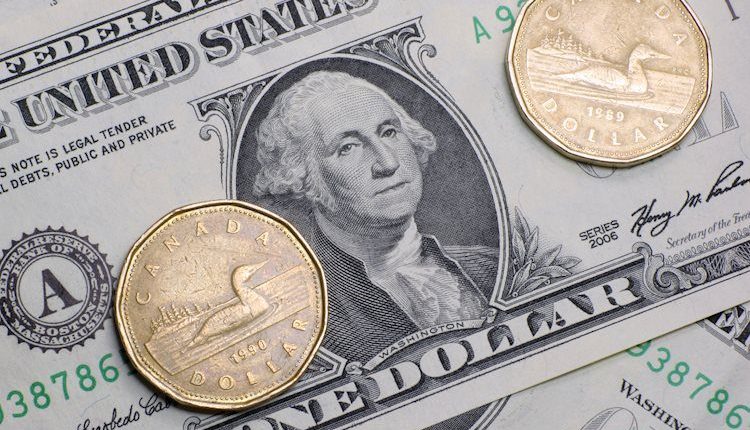- USD/CAD moves sideways before the economic data releases from both countries.
- Higher Crude prices put limits on the gains of the Aussie pair.
- Market participants adopt a cautious stance ahead of US Core PCE, awaiting further cues on US inflation pressure.
- Fed’s hawkish tone reinforces the potential of the US Dollar (USD).
USD/CAD consolidates with a negative bias, trading around 1.3480 during the European session on Monday. The pair is experiencing upward support on the back of upbeat US Treasury yields, which have surged to multi-year highs.
The upbeat US Treasury yields are contributing to the strength of the US Dollar (USD). US 10-year bond yield trades at 4.48%, up by 1.15% by the press time.
US Dollar Index (DXY), which measures the value of the Greenback against six major currencies, is hovering below a six-month high reached on Friday, trading around 105.60 at the time of writing. The DXY’s struggle to gain momentum may be due to market caution ahead of key economic data releases in the United States (US).
Investors will closely monitor the US economic calendar, which includes important data such as Consumer Confidence, Durable Goods Orders, Initial Jobless Claims, and Core Personal Consumption Expenditures (PCE), which is the Fed’s preferred measure of inflation. The annual figure for Core PCE is expected to drop from 4.2% to 3.9%.
These data points will provide insights into the economic situation in the US and influence trading involving the Greenback.
During the previous week, the US Federal Reserve (Fed) conducted its sixth monetary policy meeting. While the Fed chose to keep interest rates unchanged, it made upward revisions to its projections for the Federal Funds Rate (FFR).
For 2023, policymakers now anticipate the FFR to end at 5.60%, and for 2024, they raised their estimates from 4.6% to 5.1%.
Furthermore, comments from Boston Fed President Susan Collins and US Federal Reserve (Fed) Governor Michelle W. Bowman suggest that further interest rate tightening is possible, emphasizing the need for patience and more rate hikes to control inflation. The prospect of rising interest rates could provide support for the USD.
On Canada’s side, Statistics on Friday showed that Canada’s Retail Sales (MoM) for July increased by 0.3%, an improvement from the 0.1% in the previous reading. However, this figure fell slightly below the market consensus of 0.4%.
While Core Retail Sales experienced a more significant rebound, rising by 1.0% swinging from a 0.7% drop in the previous reading. This exceeded market expectations, which were set at 0.5%.
The rally in oil prices is providing support for the Canadian Dollar (CAD), given that Canada is a leading oil exporter to the US. This could potentially limit the upside for the USD/CAD pair. Moreover, traders will likely watch Canada’s Gross Domestic Product (GDP) for July due on Friday.
Read the full article here

